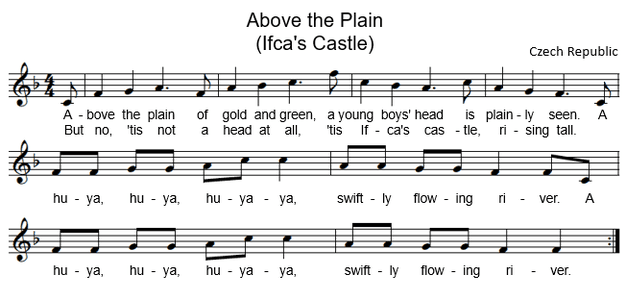©2023 Ohio Music Education Association




This strategy is aimed at efficiently learning a new vocal line through the use of solfege. The process will establish the tonality and scaffold the sight reading until the complete melody is presented. This strategy can be used in the general music or choral classroom. This example will use a Czech melody, Ifca’s Castle.
First, use hand signs to echo solfege patterns or sing the scale to establish the key of the song. Students can be supported in this step of the process with visuals such as a solfege pitch stack of the pitches in the song, hand signs, or a visual of the pitches on the treble staff. Focus on patterns used in the melody of the song during the warm-up. Patterns to emphasize aurally in this song would be drm mfs sfm mrd s,drm before seeing the notation on the staff.
The next, present a very simplified version of the melody with rhythms and some passing tones omitted. The singers use solfege to sight read this version first.
Version 1: Simplified
Version 1: Simplified

Version 2: First Rhythmic Variant
Version 2: First Rhythmic Variant
As you add rhythmic variations, pick the easiest change first. In this example, there is a simple change in the subdivisions in the last four measures.

Version 2: Second Rhythmic Variant
Version 2: Second Rhythmic Variant
Version 3: Third Rhythmic Variant
Version 3: Third Rhythmic Variant

BethAnn Hepburn teaches general music, beginning choir, and assists band for the Streetsboro City Schools.




